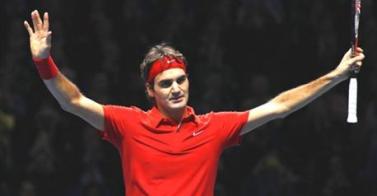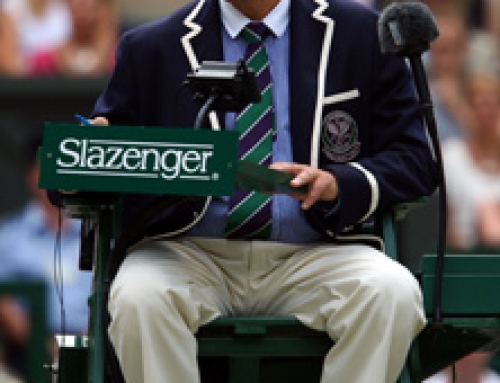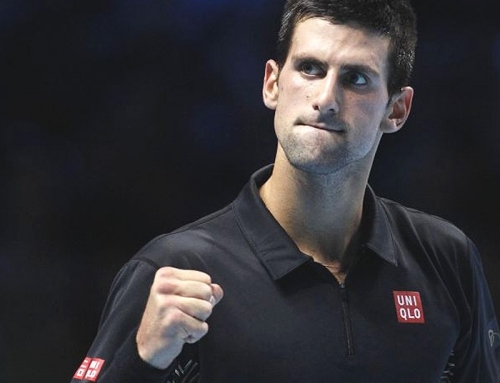 When Pete Sampras captured his 14th and final Slam at the 2002 US Open, many figured it would be years, if not decades, before someone came along to break this record. After all, Roy Emerson won his 13th Slam in 1967, which was some 30 plus years earlier. It’s even hard to compare Emerson to Sampras. Emerson basically stayed an amateur until Open tennis arrived. Arguably, Rod Laver (or anyone during the amateur era) would have won more than Roy Emerson if they had stayed amateur for more than a decade. Frankly, Laver needed the money, and couldn’t afford to stay amateur for year on end.
When Pete Sampras captured his 14th and final Slam at the 2002 US Open, many figured it would be years, if not decades, before someone came along to break this record. After all, Roy Emerson won his 13th Slam in 1967, which was some 30 plus years earlier. It’s even hard to compare Emerson to Sampras. Emerson basically stayed an amateur until Open tennis arrived. Arguably, Rod Laver (or anyone during the amateur era) would have won more than Roy Emerson if they had stayed amateur for more than a decade. Frankly, Laver needed the money, and couldn’t afford to stay amateur for year on end.
And yet Roger Federer began his assault on Sampras’s record in 2003, the year after Sampras won the US Open.
Roger’s heyday was between about 2004 and 2007. In 3 of the 4 years, he won 3 Slams, still the only man to have accomplished that feat (and he nearly did it again in 2009–had he won the US Open, it would have been the fourth time he had done it).
In 2008, Roger had mono, and this disrupted Roger’s ascendancy. Sure, he reached the semis of the Australian Open, and the finals of the French, Wimbledon, and the US Open (winning the US Open), but he was starting to mishit balls, lose to players he had never lost to before, and it seemed Rafael Nadal, after his epic Wimbledon win, was ready to take over. Who had expected that an assault on Roger Federer’s career records might occur while Roger Federer was still playing!
2009 was considered a better year for Roger Federer. He finally captured the elusive French Open, courtesy of Robin Soderling, then won Wimbledon again, and nearly won the US Open. Still, as far as that year went, he won only Madrid and Cincinnati outside of the Slams. Of course, Roger Federer would tell you that any year he wins a Slam is a good year.
2010 started promising enough. Roger Federer won the Australian Open. His backhand was looking better than ever, and he used it to great effect to beat Andy Murray. But then he had some fever or some-such and had to skip Dubai (his home away from home). He returned at Indian Wells, but lost to Marcos Baghdatis (with two match points) and then in Miami to Tomas Berdych (had a match point there), and it seemed all the problems in his game had resurfaced and all the great play at the Australian Open went away.
Roger skipped Monte Carlo, then played Rome and lost early to Ernests Gulbis (Gulbis had about a month and a half where he played really good tennis, and Rome was part of that). He played Estoril, normally a gimmer, and lost to Albert Montanes (blamed it on the heavy wet clay). His play was erratic. He was missing shots after 3-4 balls. It was like Roger of a year earlier, and none of this problems fixed.
He promised everything would be better in Madrid where the high altitudes usually mean faster conditions. Roger steadied out his game (mostly tried to play longer rallies) and got to the finals only to have his rival, Rafael Nadal reclaim the title that Roger had taken only the year before.
Then, he hit the “low period” of his career (for any other player, it would be a career best). Roger lost in the quarterfinals of the French to Robin Soderling (still his only loss in official play to the Swede) and lost in the quarterfinals of Wimbledon to Tomas Berdych (who had once given him fits at the Aussie Open). Roger tamely blamed injury for his poor play and promptly took a few weeks off.
Once he came back, Roger looked pretty good. He reached the finals of Toronto and lost to Andy Murray, then won the finals in Cincinnati over Mardy Fish. Roger reached the semis of a Slam once more, but despite match points, he lost to Novak Djokovic in another disappointment at the US Open. Although Nadal may have won that final (his serve was in rare form this year) even with Roger there, we were never treated to that outcome.
Roger took more time off, and then came back in Shanghai where he beat Djokovic in the semis but lost to Murray in the finals. He won in Stockholm to tie Pete Sampras’s career titles and then won in Basel, his hometown tournament (over Djokovic, once again) to break Sampras’s record (Sampras was 4th in all time career titles behind McEnroe, Lendl, and Connors).
Roger lost to Gael Monfils for the first time and after holding 5 match points (all break points in the same game).
But overall, ever since the break from the US Open, Roger looked like he was hitting the ball better than he has in recent memory, comparable to the way he played in the Australian Open. In particular, Roger’s backhand seemed to have more zip. He was hitting deeper balls, plus learning to put away high balls to his backhand (one that Nadal feasted on for years).
Roger cruised through the round-robin portion, not dropping a set, including to former world number 3, Andy Murray. He faced Novak Djokovic once again in the semis and once again, beat him rather handily. Novak’s mind may have already drifted to a Belgrade showdown with the French, but the fact was that Roger was hitting the ball well.
If Roger was ever going to have a good chance to beat Nadal, this was it. Nadal had skipped the Paris event, partly, he claimed, due to an injury (and perhaps partly because Paris was the fastest hardcourt on tour). Usually this means Nadal is preparing to win a title. Of all the goals he’s had, the one that has eluded him the longest is the year-end championship.
Indeed, this was his fourth appearance ever. Twice, he qualified, but due to injury, was unable to participate. This year was his first time in the finals.
Nadal started off rusty, losing a set to Roddick, but swept Group A with 3 wins, then played a thriller of a match against Andy Murray to win in a tiebreak. Murray was playing aggressive tennis, but it’s not a style he’s used to. He has only recently upped his aggression level, and even then, he doesn’t trot it out every match. Meanwhile, a player like Roger Federer always plays aggressive, even if it means losing when he has too many errors.
Roger started off serving very well, and returning rather poorly. This might have been a strategy. Go for a few big returns so Nadal doesn’t get into a rhythm. Then, at 4-3, Federer took his chances and began playing aggressively. He had one break point, and secured it, then held for 6-3.
In the second set, Nadal upped his aggression level and got a break on a poor Federer service game and used that break to win the second set, 6-3, and one wondered, for all of Roger’s good hitting, was Nadal going to do it to him again. However, Roger escaped one close game and then played aggressive to secure one break, then played aggressive to secure one more break. When he was ready to serve out the match, he hit a crosscourt so deep that it was called out. Roger was going to question it, but Nadal, sensing he was not going to escape, conceded the call, and Roger won his fifth year-end championship, 6-1 in the third.
This victory is important in many ways. Obviously, beating Nadal when Nadal has a huge lead record-wise is huge, but even more important is his unbeaten record winning the title. Because he swept the round-robin (each match win worth 200 points), his total points was 1500 which is 3/4 of a Slam. If he’s going to break Pete Sampras’s record for weeks at number 1 (he’s 2 weeks short of this title, and would have broken it had he won his match against Soderling, or frankly, had he won the US Open in 2009), he needs to make up the difference between him and Rafa.
If Rafa wins the French as he’s generally expected to do, Roger will need all the points he can get to reach number 1 once again. He has to do this with the threat of Davydenko playing better, with del Potro expected to return to tour (but a year of no play may require a year to get back in good shape) and with Murray starting to get better, and who knows, there might be someone waiting in the wings to make the leap up the rankings.
All in all, Roger was playing his best tennis and did it on a surface that best suits his game. He’s starting to use the net a bit better and declined to hit drop shots against Rafa.
Now we have a little over a month of rest before it starts all over again. In 2012, they will move the year-end championship up 2 weeks to provide more rest. In 2011, Madrid will become the middle tournament and Rome will move to the last of the 3 tournaments. Players complained that the conditions in Madrid, up in altitude, was disruptive in their preparation to play at Roland Garro
Congrats to Roger Federer and his win and to Rafael Nadal and his great year!



![[WTF] Djokovic wins third year-end title with straight set win over Nadal](https://www.essentialtennis.com/wp-content/uploads/2013/11/20131111nole-500x383.jpg)
![[WTF] Djokovic defeats Federer in round robin play](https://www.essentialtennis.com/wp-content/uploads/2013/11/20131105djo-500x383.jpg)


![[World Tour Finals, Semis] Djokovic and Federer to meet in the finals](https://www.essentialtennis.com/wp-content/uploads/2012/11/20121110fed-500x383.jpg)